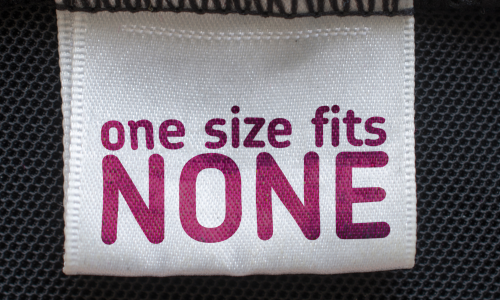It’s being touted as a Golden Age for HR but organisations are struggling to engage the kind of talent needed to fulfil on the promise. In this time sensitive, talent short market, could a virtual Chief People Office (CPO) and an on-demand talent ecosystem be the answer?
Below, we explore the evolving role of the CPO and the potential for taking a virtual, ecosystem approach to power the role, the function, and the business.
Freed from administrative and process-related work by technology and automation, the role of the CPO role and their executive HR team, has evolved and the pressure is on to drive people strategies that will attract and retain the diverse capabilities needed to fuel future growth.
“Organisations have traditionally underinvested in HR and are now seeking HR unicorns to solve a myriad of complex people challenges, and they are coming up short,” says Peta Karunaratne, Founder and CEO of The Karuna Collective.
As the need for innovation in HR and the design of work accelerates, the strength of an organisation’s CPO and their team will be what differentiates success from failure.
But the kind of transformational thinking and leadership ability needed to unlock opportunities, relies on finding and engaging the best and brightest HR talent.
In this time sensitive, talent short market, tapping into a virtual CPO – and their people experience ecosystem – could be the answer.
“Organisations have traditionally underinvested in HR and are now seeking HR unicorns to solve a myriad of complex people challenges, and they are coming up short,”
Peta Karunaratne – CEO & Founder
The Virtual CPO
The model of the ‘virtual’ C-level executive was being explored by other functions even before the so-called Great Resignation, but organisations have been slower to invest in their People & Culture capability and it remains relatively untested model for HR.
“Ironically, the very function that needs to take the lead on shaping the new way of working, has been one of the slowest to respond,” says Peta.
There is still a strong desire to recruit permanent roles into the HR function yet, there are far more innovative practices that allow organisations to tap into thinking, talent and future focussed capabilities on demand for the problem at hand.
Far from hopeless, Peta sees the War for Talent 2.0 as an opportunity for organisations to fast track transformation: “The very people who are disrupting their own ways of working and thinking most creatively about the Future of Work, are the same people who have stepped out of traditional employment. This the kind of talent you want to tap into to design your people and partner experience.”
Peta believes organisations should extend their thinking beyond employee experience and traditional HR engagement frameworks based on the conventional employer – employee relationships, thinking more about the talent ecosystem they need to cultivate and their value proposition for these people.
Respond, don’t just react.
Peta believes the first step is to determine what is core to the business versus what can be complementary and done within ecosystem roles, that don’t require full time or cronstricted office hours.
In the future Peta believes business partnering HR roles are likely to remain in-house (although in the start up / scale up ecosystem we are seeing HR partnering as a service is a capability in demand), but specialists in organisational design, diversity, HR strategy, talent acquisition, Learning & Development and data analytics can be engaged and work more intelligently in an ecosystem environment.
Burnt by high costs, cut-and-paste consulting solutions, and bungled rollouts, plenty of businesses are cautious about the costs of ‘outsourced’ models and struggle to get to grips with why an ecosystem approach would be different.
Peta anticipates initial pushback on the cost of engaging more expensive resources, but recommends reframing this a cost/time versus value equation: “Does your business really need a full-time diversity, or organisation design specialist? And if you could access a highly talented, productive resource, would that make more sense to use them at critical periods, rather than settle for what you can afford in a talent market where remuneration is ballooning?”
According to Peta, the core strengths of the Virtual CPO model are varied:
Best in class talent – Engaging a virtual CPO not only brings their skills and capabilities to your business, but also connects you into the orbit of their network, helping organisations tap into the kind of collective mentality and talent that delivers win-win results.
Dynamic network – The need to navigate the unknown through collective leadership, where no individual has all the answers and the challenge at hand is a moving target, is addressed by tapping into the best and brightest professionals – and orchestrating their networks – at the moments that matter.
See what’s happening outside your business – Rather than operating in a closed loop, virtual talent connects you to specialists who are simultaneously working with other organisations on similar challenges, providing immediate and tested market insights into what’s working and what’s not.
Embrace perpetual reinvention –As technology gives rise to new ways of working, work itself will be continuously reinvented. Deploying a virtual ecosystem model inside the organisation, that brings outside perspectives, provides the virtual CPO with the ability to orchestrate different types of talent and models for getting work done.
Cost efficiencies – Unlike costly, traditional consulting models, the ecosystem works as part of the team to first identify the problems to be solved, then to deliver solutions through a collective of expert service providers, each bringing specialist talent and experience. By reframing the work around what needs to happen ‘in office’ and what can happen outside the hours of 9-5, organisations are able to tap into best in-class talent with an outcomes – rather than time and costs – focused mentality.
- Supplement in-house HR capabilities with a network of experienced talent
- Tap into best-in-class talent Innovation, People & Culture networks
- Orchestrate expert talent to fast-track transformation
- Incorporate outside perspectives and market tested insights
- Achieve cost efficiencies by accessing talent at moments that matter
Peta points to a recent case study where The Karuna Collective partnered with a medium sized financial services organisation, already equipped with a fully functioning HR team: “They had a strong, capable team, but given the dynamic challenges of COVID recovery and ambitious growth strategy, they needed to tap into more strategic thinking and project design and delivery for a period of time,”
“The virtual CPO model has allowed them to fly the plane, and build the new one at the same time,” Peta adds.
Becoming a Partner of Choice
In embracing a virtual ecosystem, HR will need to think not only about how the organisation creates an appealing Employee Value Proposition, but how the function itself creates a reputation as a Partner of Choice through their Ecosystem Value Proposition.
Far from struggling for hours, Peta predicts the kind of specialists now working in ecosystem environments will be able to pick and choose their projects in the future: “Traditionally HR doesn’t have a depth of experience in partnering with these kinds of specialists. The function will have to think creatively about new engagement models that offer meaningful challenge and radical adaptability, if they want to win.”
Peta points to another recent case study where The Karuna Collective partnered with a member-based banking organisation: “With a strong social purpose, our partner offered meaningful work that impacts the lives of members,”
“That was a highly attractive proposition to senior people in my own ecosystem that the business might not otherwise have been able to attract or afford on a more traditional employer-employee basis.”
If you’re looking to bring leading edge thinking and current market insights and lessons learned to accelerate more quickly, reach out.






